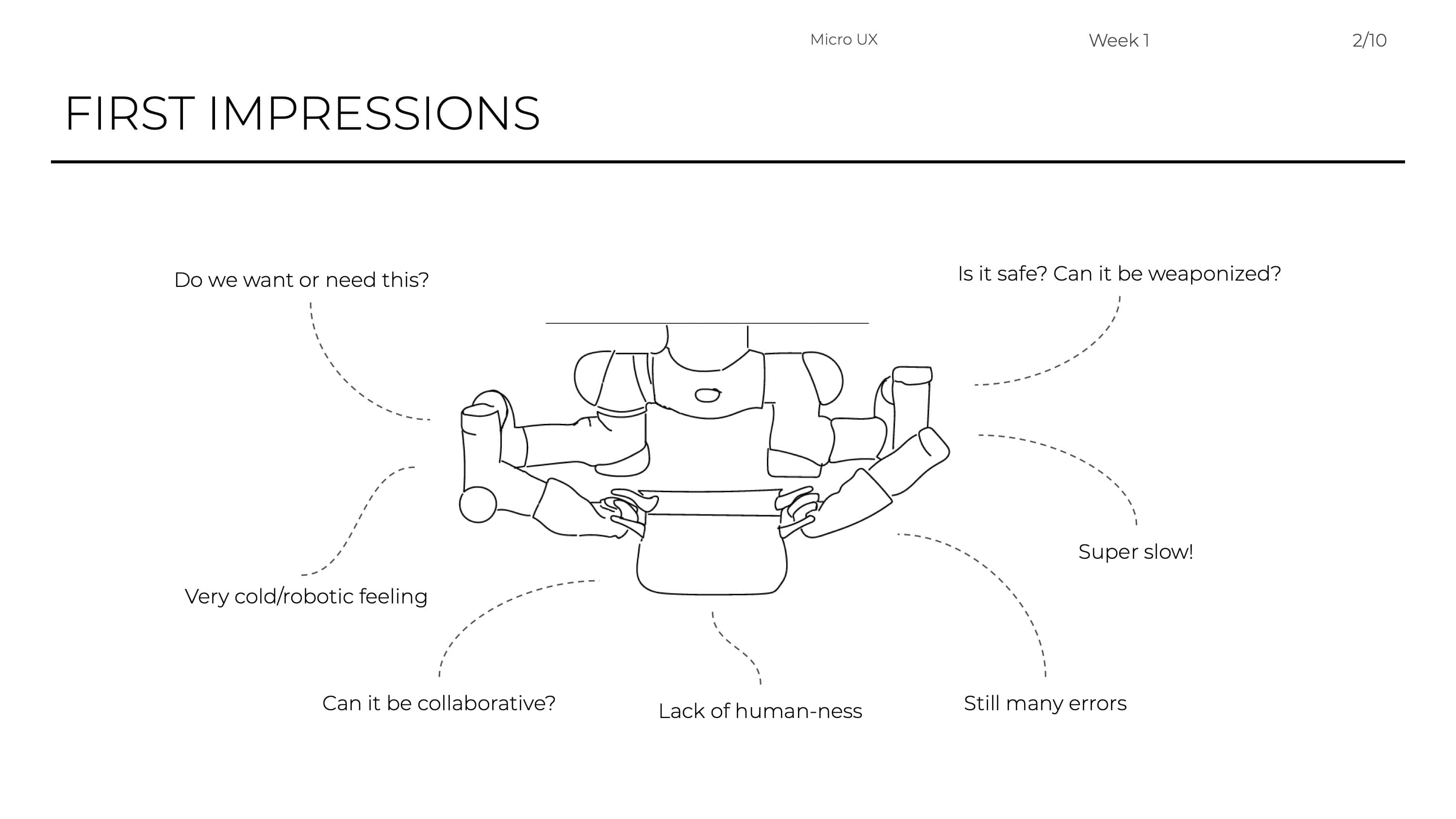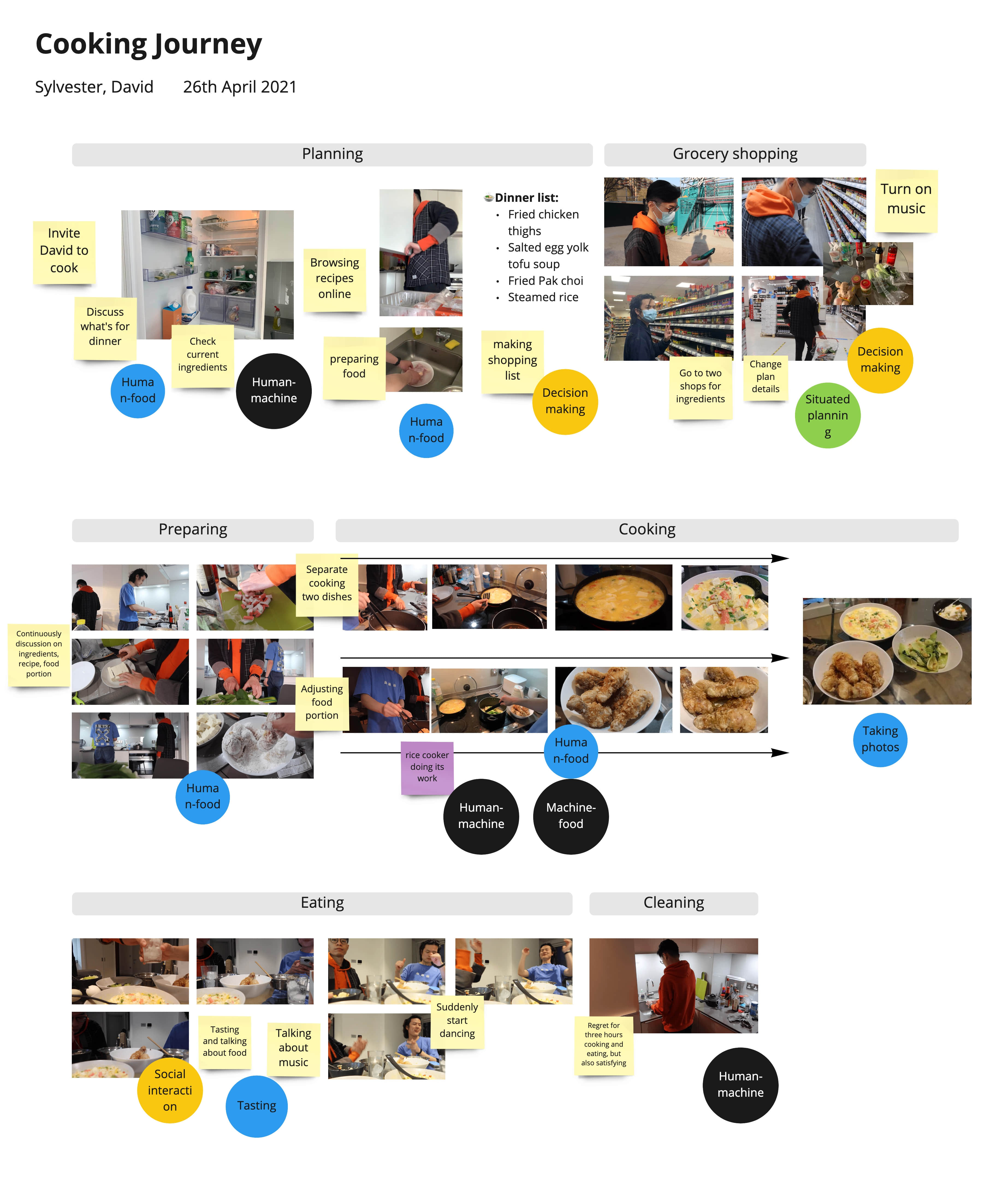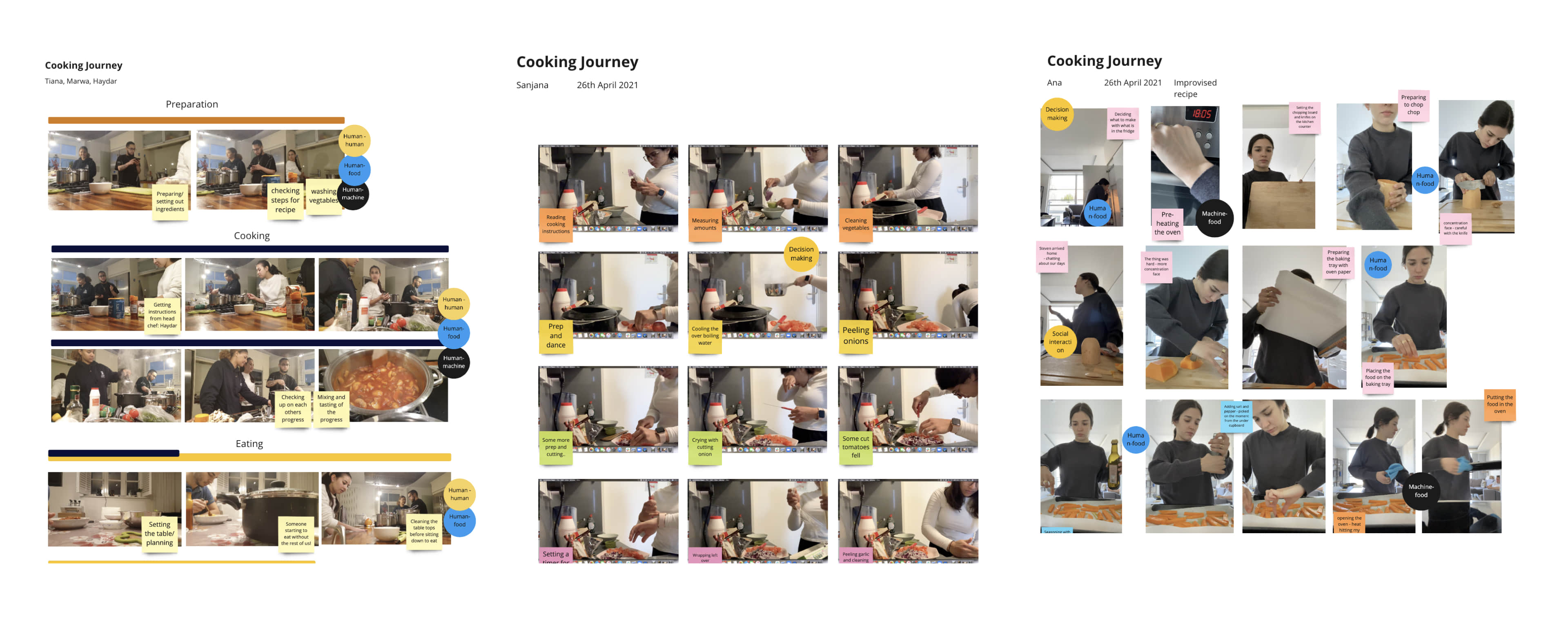
Robot is taking over
Micro UX - Week 2
Brief: Design the social relations and interactions between a robot chef and its human guests.
Team: Tiana, Ana, Sanjana, Sylvester
The Micro UX unit starts right after the national lockdown was lifted, and we finally have the chance to go back to the campus! Serval exciting external partners join in this unit, providing fruitful contexts for new challenges. I noticed that rather than working with designers or design research professionals, we now collaborate with musicians, developers, gardeners, and chefs.
In this project, our group will work with Moley Robotics, a robotic company based in London. The best-known product from Moley is an advanced robotic chef and intelligent IoT kitchen system. In this automated kitchen setting, we will explore new social interactions between the chef and the guests.
First impressions on Moley
As a quick intro, James and Igor from Moley gave us an online demo of the robot chef cooking pasta on Thursday. We were so thrilled to watch the most advanced technology initially, but gradually turned into doubts and challenges to this machine which seems to come right out of a sci-fi movie. The robot is delicate in design and engineering, with stable, quiet movement and high-quality equipment. On the other hand, it moves very slowly, even appears cautiously, but at some point reminds us of its lifelessness when it is stirring the pasta and sauce without actually mixing them. Imagine the robot takes over the kitchen and doing its work once it is on. Nothing can intervene except the internal errors.

For confidential reason, please see the video below (instead of demo video) for how the Moley robot works.
What is a robot?
After viewing the demo, the first instinct for me is how do we define a robot. What differentiates robots from tools, machines, and humans? It seems that the ability to be reprogrammed to do different tasks is a distinct characteristic for robots, which requires them to autonomously sense and adapt to the surroundings, even making their own decisions to perform actions. The imagination and realisation of robots reveal a human-centred projection to artefacts–while a classical image of humanoid machines frequently arises in sci-fi movies, the real-world prototypes often take shapes in cars, arms or a cylinder.
A robot is a reprogrammable, multifunctional manipulator designed to move material, parts, tools or specialised devices through variable programmed motions for the performance of a variety of tasks. (Robot Institute of America, 1979)
Images of robots comparision
Human-Robot Relationship
To better understand the current relationships of human-robot, I read Sheridan’s (2016) article, which divided HRI (Human-Robot Interactions) into human supervisory routine tasks, remote control, automated vehicle and human-robot social interactions. The last category, social interactions, remains challenging because it often leads to complex dynamic responses (voice, face, gesture) to ‘convince’ people the robot is intelligent. Human involvement formulates a deep uncertainty, resulting in cooking and cleaning in a kitchen much harder than building an aeroplane to robots. (Thomaz, 2015)
Human vs Robot cooking
On the other hand, cooking and eating are carriers of physiological and social needs. Beyond food consumption, eating reproduces or construct life on all levels, from the physical to the social (Mintz and Du Bois, 2002). Considering even daily eating could include countless interactions between human, machine and food, our group decided to document our cooking behaviour and looked into details.


Role Play
On Thursday, we conducted another experiment to simulate having the Moley robot in the kitchen. I impersonated the robot chef and asked Vanessa and Moxue as human guests to experience a whole cooking journey via role play. To run this experiment smoothly, all our group members had to give instructions in the process.

👉🏻 See Week 2: Cooking with the robot
References
- Mintz, S.W. and Du Bois, C.M. (2002). The Anthropology of Food and Eating. Annual Review of Anthropology, 31(1), pp.99–119.
- Sheridan, T.B. (2016). Human–Robot Interaction. Human Factors: the Journal of the Human Factors and Ergonomics Society, 58(4), pp.525–532.
- Robots Science (2020). Robot Vs Machine: Difference between a Robot and a Machine? [online] Robots Science. Available at: https://www.robotsscience.com/resource/difference-between-a-robot-and-a-machine/ [Accessed 9 May 2021].